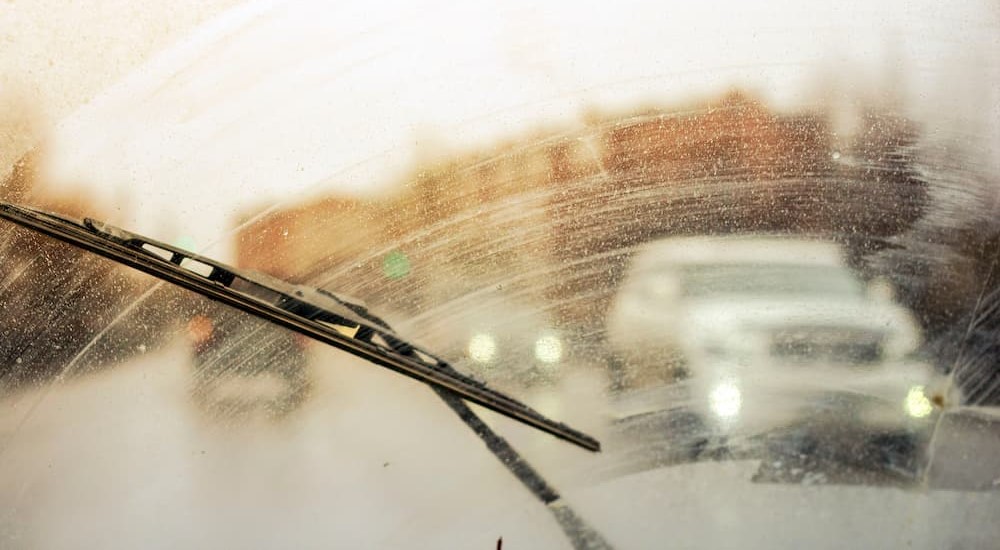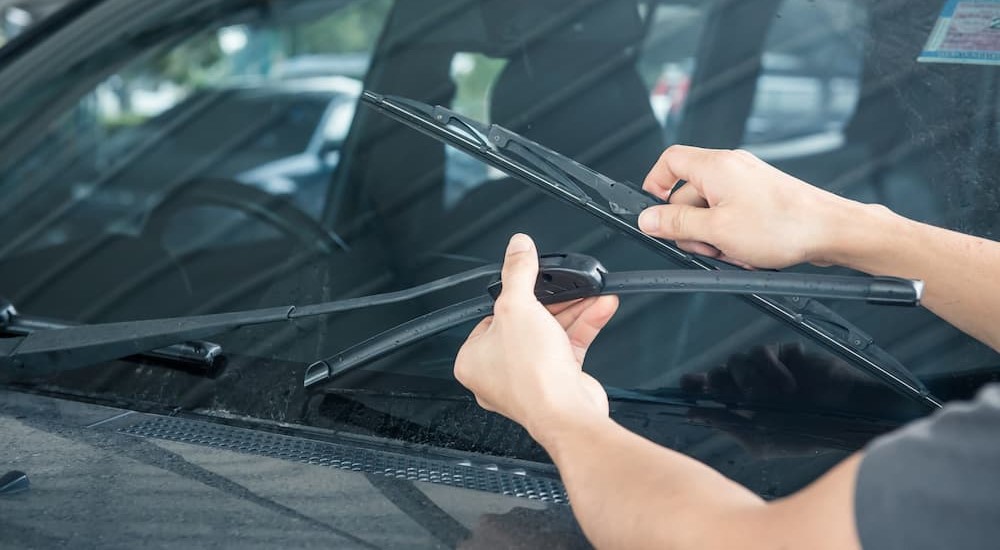When the rain or snow starts falling, you want a clear sightline to assess the road and driving conditions ahead of you—so if your wipers quit working, it’s crucial that you replace them immediately to ensure your and other drivers’ safety.
It seems like a simple job anyone can do, but many drivers tend to put windshield wiper replacement off. Sometimes, you’re just busy and can’t be bothered. Maybe you’re waiting for your annual maintenance check-up to have it done, or you tried to do it yourself and felt overwhelmed. We get it—life happens, and you run out of time. Plus, if you’re not familiar with working on your vehicle yourself, one trip to the store might give you nothing but a headache… so where do you start?
When good blades go bad, they need to be dealt with—plain and simple. Read on to learn the basics of wiper blades, why they wear out, and what you can do about it.

The Average Life of Wiper Blades
As drivers, it’s easy to let things like old wiper blades fall by the wayside. We put them on, they work, we move on. Maybe you bought a car and never gave your blades a second glance. It’s easy to overlook these important components until you’re in a downpour and can’t clear the water from your eyes. That is why staying up to date with your blades is essential for your safety.
So, how long do wiper blades last? Knowing when you need to replace your blades can help you plan better and make a mark on the calendar so that, when a storm blows in, you’re ready for it. Well, the average life for wiper blades varies depending on a variety of factors…
Frequency of Use: If you live in a dryer than normal climate or you don’t drive very often, your blades tend to last longer. This is rather obvious.
Weather Conditions: The type of weather you’re battling can affect the life of your wiper blades. Severe temperatures or heavy rain, sleet, ice, and snow are all forces that can degrade your blades faster.
Brand of Blades: There are a lot of options for wiper blades. You can splurge on high-end name-brand blades, order blades specifically for your vehicle from the dealer, or stop by a 24-hour chain store and pick up some generic, lower-cost blades. While wiper blades might all start out looking the same, less expensive ones can quickly wear down, forcing you to replace them sooner than mid-range or high-end brands.
Dirt and Dust: Debris can become a real problem when not cleared away from your blades. It’s easy for particles of grime to build up and chip away at your blades’ integrity as they wipe precipitation from your glass.
Don’t Park Under Trees: If you can park your car under a shelter or in a garage, it will thank you. Parking under a tree might seem like the next best thing, but constant exposure to tree sap and bird droppings can weaken and break down the rubber on your blades faster.
On average, the lifespan of your wiper blades should last around a year, but you’ll shave off a few months if you are dealing with heavy use and extreme weather. After twelve months, your blades should be changed out to ensure your vehicle can handle any weather.
Signs You Need to Change Your Wiper Blades
How do you know when you need to replace your wiper blades? Maybe you have no idea when they were last replaced. If that’s the case, there are a few things you can look out for that can let you know if your blades are struggling and need to be changed.
Look for streaking on the glass. Over time, the rubber on the wiper blades will fade, dry out, and begin to crack; this leads to lackluster performance and streaks across your windshield, which can be troublesome or even dangerous if the streak is right across your main area of vision.
Another telltale sign is when the rubber starts to separate altogether. If you notice bits of black rubber being left behind, there’s no doubt about it: those blades need to be replaced.

How to Extend the Life of Your Wiper Blades
Changing out your blades once a year is something any driver can fit into their budget. But if you find your blades wearing down after only three months, that can add to your car’s expenses. If that’s the case, there are a few things drivers can do to help get as much use out of their wiper blades as possible.
Only use your wipers when you need to and under the right conditions. Using your blades on a dry windshield is no good for the rubber. It can stress and crack your wipers, so ensure you only use them when participation needs to be cleared away. Slippery, wet glass makes it easy for wiper blades to glide over the windshield and do what they were made to do.
Annual exterior cleaning—either at home or going through a car wash—is a simple way to extend the life of your blades. Regularly cleaning your windshield can easily remove layers of dirt, dust, and debris that can affect your wiper blades’ performance and longevity.
When things get cold, instead of turning on your wiper blades and watching them struggle against the ice and snow, take the extra minute to clear away snow and remove ice build-up so there is less strain on your blades. Ice and extreme temperatures can dry out and crack the rubber in your blade prematurely. Keeping them as clean and protected as possible can help get you through the winter.
Is It Easy to Change Your Wiper Blades Yourself?
It is possible to take matters into your own hands and replace the wiper blades yourself—or you can make an appointment to have them replaced. There are even some automotive stores that will replace them for you upon purchase. But changing wiper blades isn’t as complex as it might seem, and it is possible to DIY if you’ve got a few extra minutes.
The first important thing is to make sure you get the right blades for your car. Not all blades are the same, and not all blades are universal. Check your owner’s manual or stop by an automotive store for guidance to ensure you start on the right foot.
After you know the size of the blade you need, the next thing you need to do is remove your old wiper blades. Again, you can consult your owner’s manual for tips and guidance. If you’re familiar with wiper blades, you’ll notice—upon lifting the arm—that there is a small tab where the wiper and wiper arm meet; pressing this tab allows you to slide the old wiper blade off of the arm.
As easily as the old blade slid off, slide the new blade on. The tab on the arm should confirm all is well when it clicks into place. The process is the same for the second blade. After both blades are replaced, it’s a smart idea to make sure they are installed properly; testing your windshield wipers will give you the peace of mind that, when it storms, you won’t have any problems.

Get the Most From Your Wiper Blades
Whether you’re a first-time car owner or a seasoned driver, knowing how to take care of your vehicle is essential. Something like windshield wiper blades might seem like no big deal, but they are important for your safety. Knowing how long they last and when/how to replace them are all good things to remember.
On average, your wiper blades should be changed out every six to twelve months depending on a variety of factors that include weather conditions, driving habits, brand, and use. Knowing the signs that your wiper blades have seen better days means you can update your blades before the rainy season hits so that your view remains clear.
Getting the most out of your wiper blades by taking the necessary steps—like removing dirt and debris and keeping them free from ice—can mean getting a few extra months from them. Keep up with your routine maintenance and update your wiper blades so your vehicle can tackle whatever the seasons bring.

